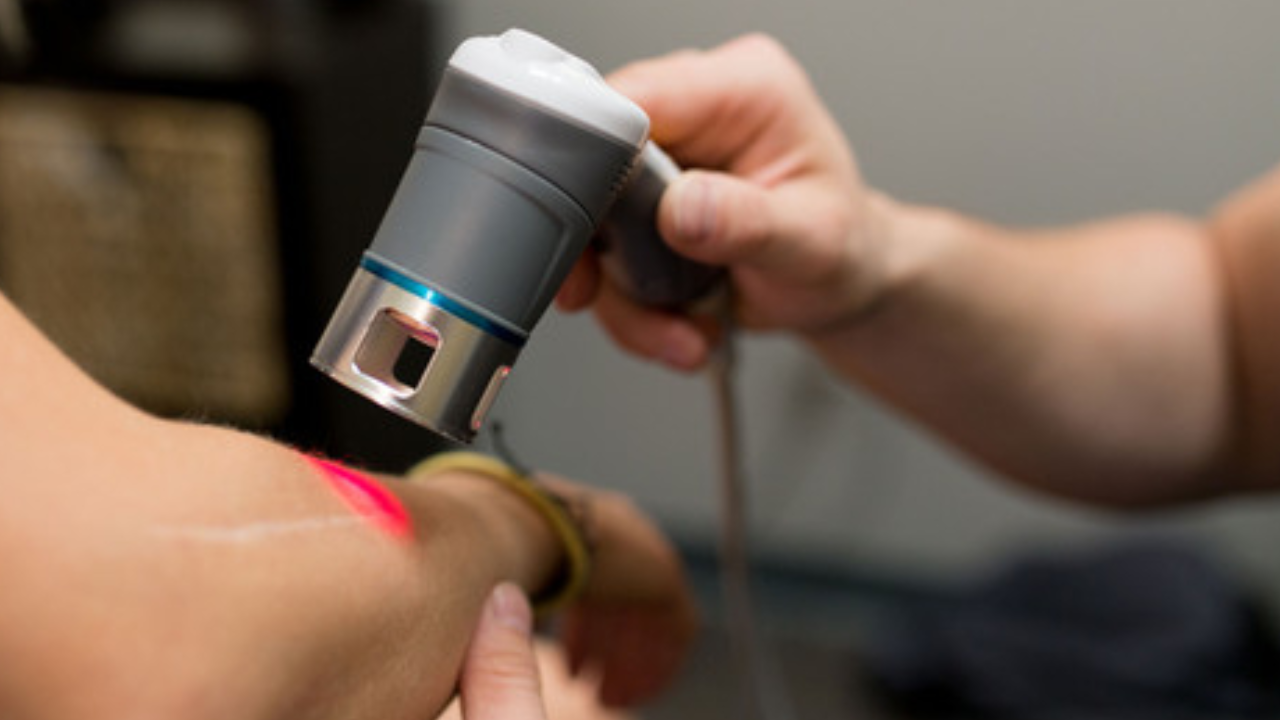Low-intensity lasers or light-emitting diodes are used in laser pain relief therapy, commonly called Low-Level Laser Therapy (LLLT) or Cold Laser Therapy, to reduce pain and accelerate recovery. These non-thermal lasers target afflicted tissues cellularly by penetrating the skin and emitting particular wavelengths of light. The treatment activates biological functions, augmenting mitochondrial energy production and encouraging tissue regeneration.
To treat a variety of pain ailments, such as neuropathic pain, arthritis, and musculoskeletal injuries, laser pain reduction therapy offers a non-invasive, drug-free method by reducing inflammation, and affecting neurological processes. Cold laser pain relief therapy is now considered a viable option in the field of pain management and rehabilitation due to its success, which is frequently demonstrated by decreased pain and better function.
Does Laser Therapy Have Any Long-term Benefits?
Long-term advantages of laser therapy include the possibility for increased mobility, pain reduction that lasts and general well-being. It could help control chronic illnesses like arthritis or neuropathy over the long run by inducing cellular activity and aiding tissue repair.
Furthermore, the anti-inflammatory properties of laser therapy can provide long-lasting relief. Although results may differ from patient to patient, many patients report sustained improvements in their functionality and pain levels over time. For long-term effectiveness, it can be advised to perform routine maintenance sessions.
Elements Affect Cold Laser Therapy for Pain Relief
Patients and healthcare providers need to grasp the major factors influencing Cold Laser Therapy, from the features of the laser device to specific patient circumstances.
Wavelength and Energy Density
An important determinant of the effectiveness of cold laser therapy is the laser's wavelength. The target tissue and the intended treatment result determine which wavelength is best. Different wavelengths penetrate tissues to different depths. For instance, wavelengths in the red and near-infrared range are frequently employed due to their propensity to permeate the skin and activate cellular processes.
Treatment Length and Frequency
The length of Cold Laser Therapy sessions and their frequency are important factors in getting the best results. Even though the therapy is non-invasive and usually well-tolerated, it frequently takes several sessions to see results that last. Based on the particular ailment being treated and each patient's response, medical practitioners must establish the proper therapy length and frequency.
Tissue Type and Depth
The selection of laser parameters is influenced by the depth of the target tissue, and distinct tissues react to cold laser therapy in different ways. Lower-powered lasers with shorter wavelengths may be necessary for superficial illnesses like wounds, skin ailments, and surface musculoskeletal issues. On the other hand, to successfully target structures, deeper-seated problems like deep muscle or joint pain may require longer wavelengths and higher energy densities.
Affected Individual Characteristics
A patient's gender also affects how well a cold laser treatment works. For example, skin pigmentation can affect how much light is absorbed; darker skin absorbs more light than lighter skin. The age of the patient, general health, and the particulars of the situation being treated all influence how the body reacts to the therapy. Furthermore, specific clinical circumstances or medications may potentially affect the body's ability to benefit from cold laser therapy.
Treatment Timing
Another factor to take into account is when to start Cold Laser Therapy concerning the onset of the injury or pain. The ideal outcome window for treatment may differ for acute injuries compared to chronic illnesses, and the former may respond differently. Healthcare practitioners can better customize the timing of Cold Laser Therapy for best effectiveness by having a thorough understanding of the biological processes involved in both the early and late phases of injury.
Practitioner Experience
Achieving favorable results with Cold Laser Therapy depends heavily on the competence and experience of the medical practitioner delivering it. The success of the therapy depends on the laser probe being positioned correctly, following advised procedures, and having the flexibility to modify treatment parameters in response to each patient's unique response. Skilled professionals can minimize the possibility of negative effects while maximizing the therapeutic benefits.
Final Words
As a well-tolerated, non-invasive method for tissue healing and pain reduction, cold laser therapy has potential. However, attaining the best outcomes necessitates a sophisticated comprehension of the factors affecting its efficacy. Both patients and healthcare providers need to take into account variables such as tissue type, patient characteristics, treatment duration, energy density, wavelength, practitioner experience, and integration with other therapies.


